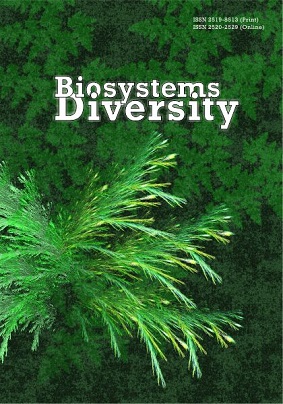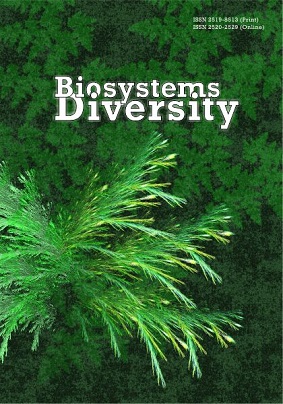
Сезонні зміни вмісту важких металів у воді малих річок
This article analyses the level of heavy metals (Zn, Mn, Fe, Pb, Co, Ni, Cd) and characteristics of their transportation through the water of minor rivers in Rivne region, Ukraine. The levels of Zn, Cu, Mn, Fe, Ni, Co in the waters of these fisheries exceeded the maximum permissible concentration limit in different months. We found that the concentration of Pb and Cd did not exceed the permissible concentration limit in the waters of the fisheries during the year of research, while the level of other metals exceeded the permissible levels by 1.1 to 151.0 times. This research confirms that the surface waters of Rivne region are characterized by high concentrations of iron, manganese, zinc, and nickel. The level of iron exceeded the maximum permissible concentration limit by 1.1 to 5.0 times, the level of zinc by 1.5 to 15.0 times, that of manganese by1.3 to 6.7 times and the nickel level by 1.3 to 151.0 times in the fishery waters. In principle, the increase in the level of heavy metals (Zn, Cu, Mn, Fe, Ni, Co) is connected with the lithological composition of reservoirs in the water-collecting areas of the investigated rivers, and besides with the significant influence of the anthropogenic load (fuel combustion, aqueous wastes of factory units, agricultural effluent, etc.), and with the increase in aquatic vegetation, pH balance, temperature change and so on. The appearance of iron-manganese compounds can be explained by natural causes such as reformation of the source minerals into secondary minerals in the conditions of pH level recession in water, which causes the release of these molecular entities; leaching of iron from the iron-manganese septarian nodules, a substantial amount of which is contained in the illuvial horizon. The increase in the level of zinc and nickel in the river water is connected with the leaching of these elements from subsurface rocks, soil and forest leaf litter. Atmospheric condensation is a significant source of the presence of nickel in the surface water. For the investigated rivers, the most significant factors in the water’s chemical composition are physiographic (foremost, the character of the soil cover, intensivity of erosion, extent of forest and swamp cover) and anthropogenous impact. In the rivers of Rivne region high concentrations of heavy metals are the consequence of the long-term aggradation of abiotic and biotic substances of the water ecosystem. There is a tendency for a reduction in the concentration of most metals in the abiotic substances of the water reservoir during the vegetative season and an increase after the end of this season. This research shows that the high level of contamination of the water of Rivne region’s minor rivers by the investigated heavy metal components is caused primarily by anthropogenic factors.
More...
